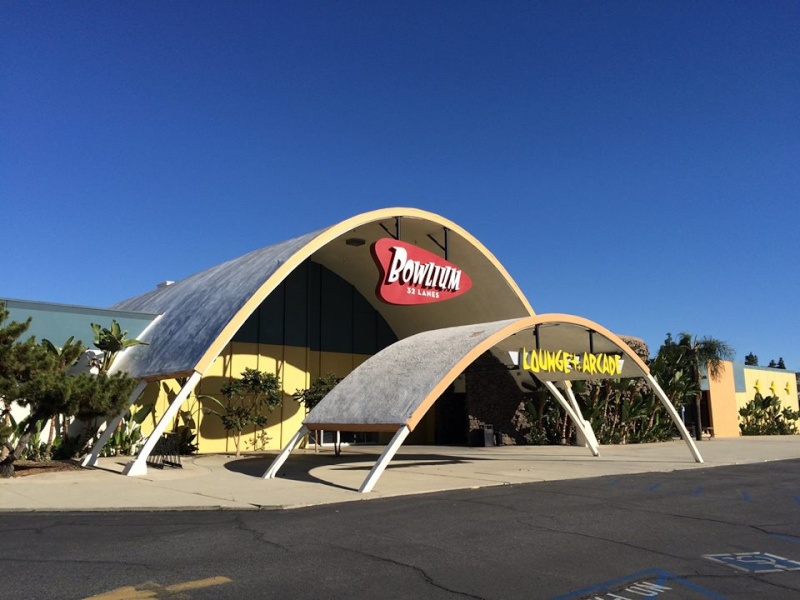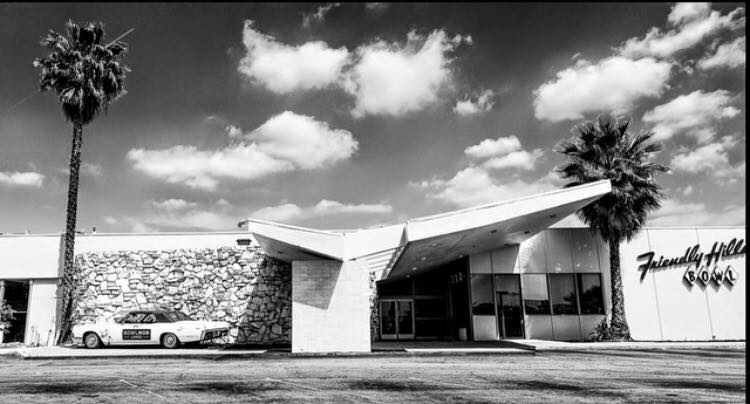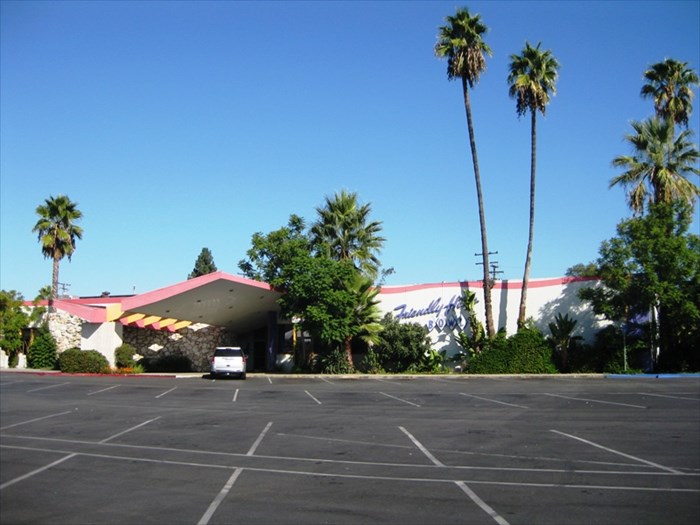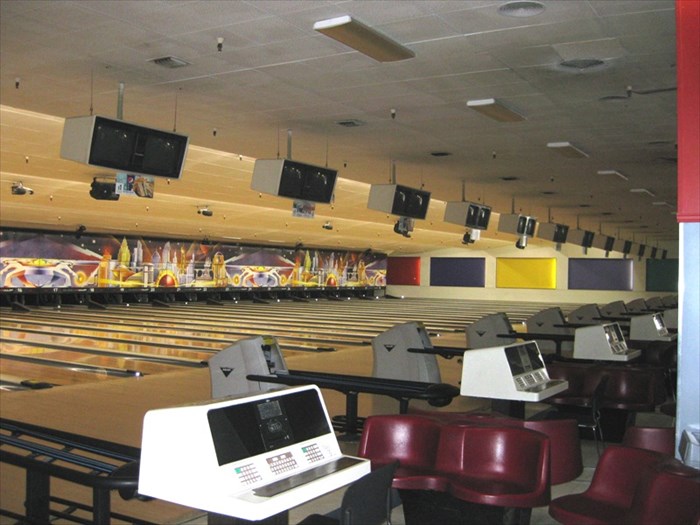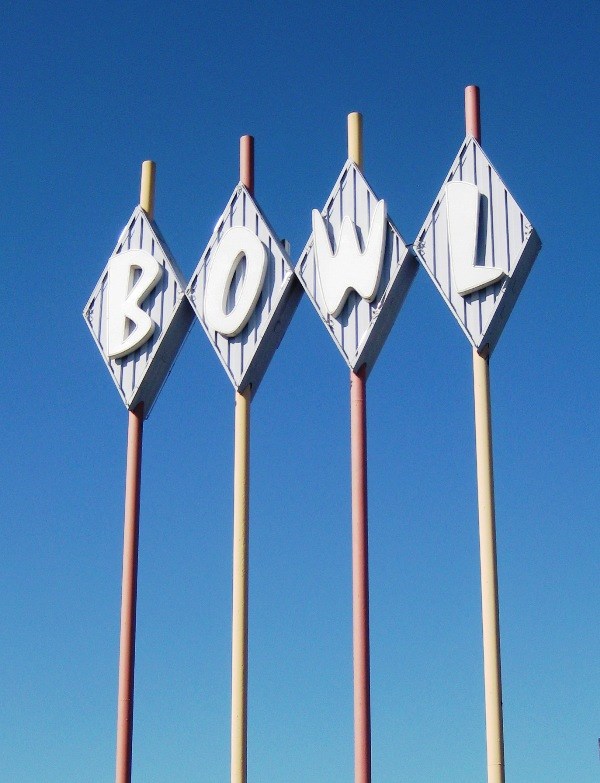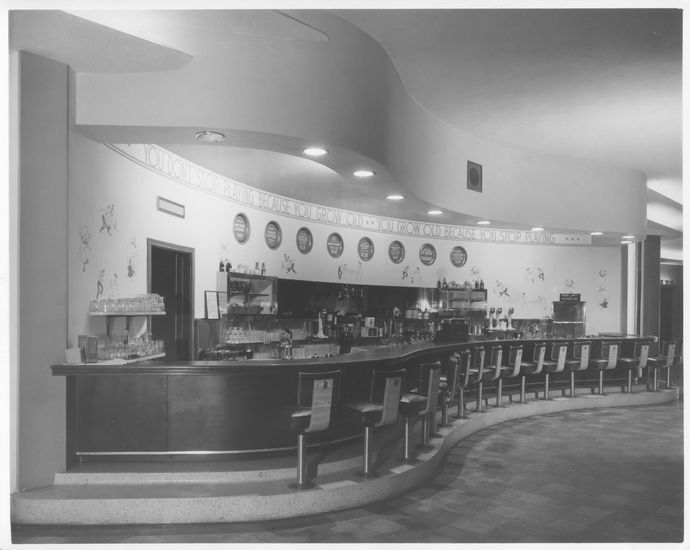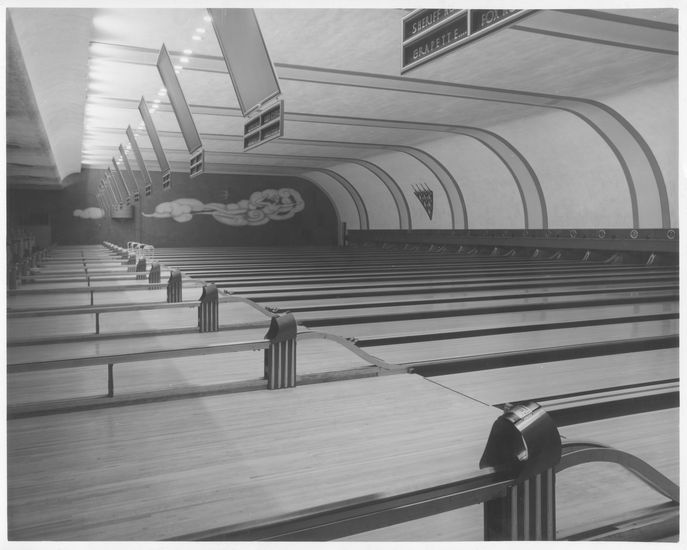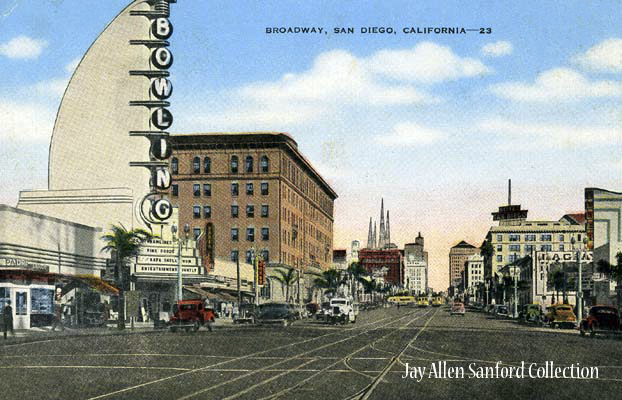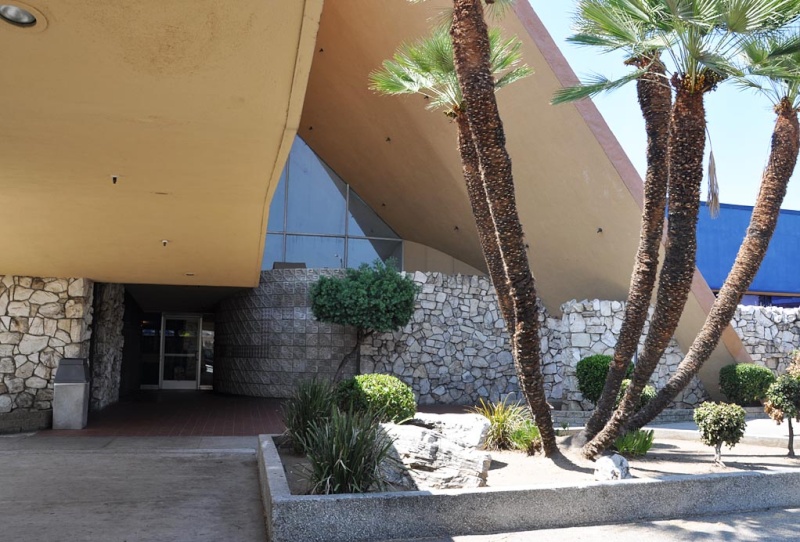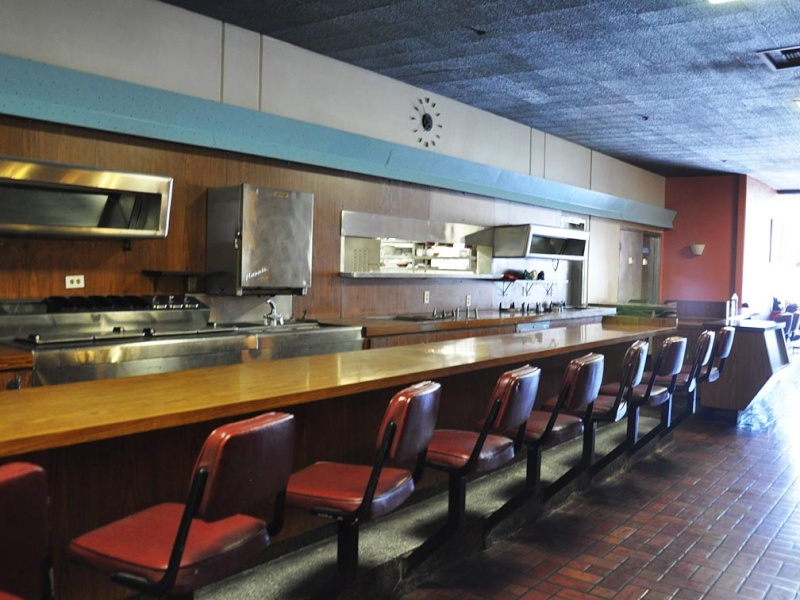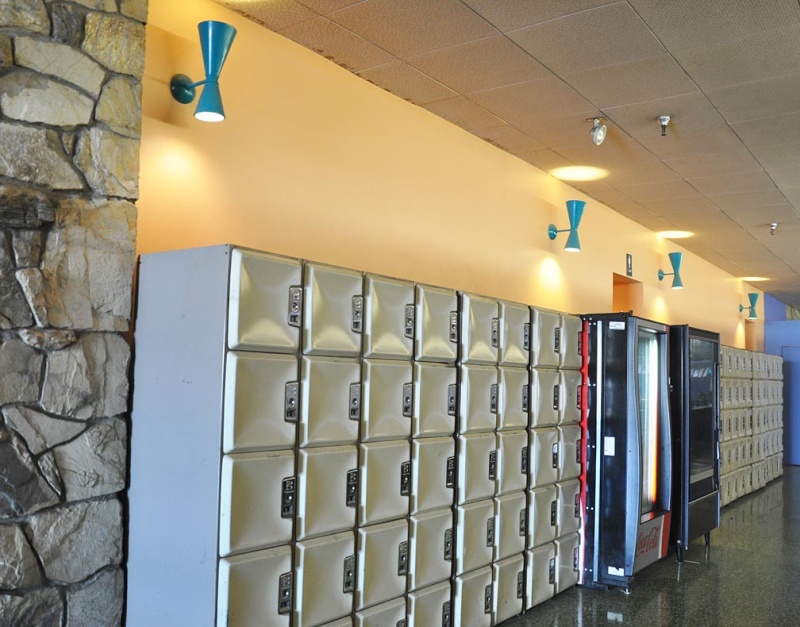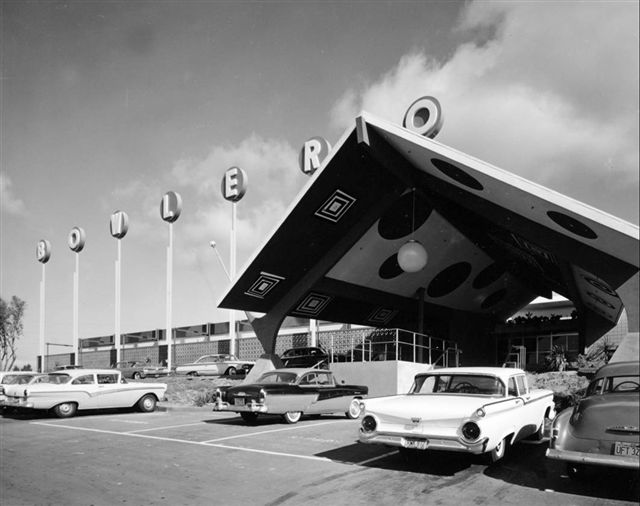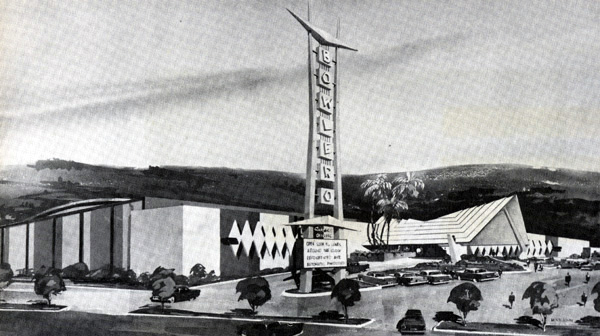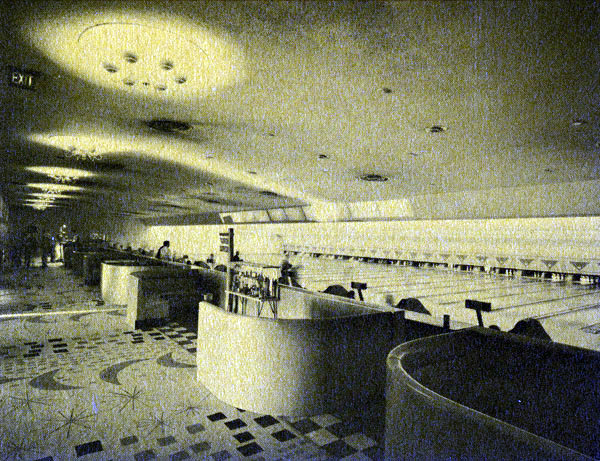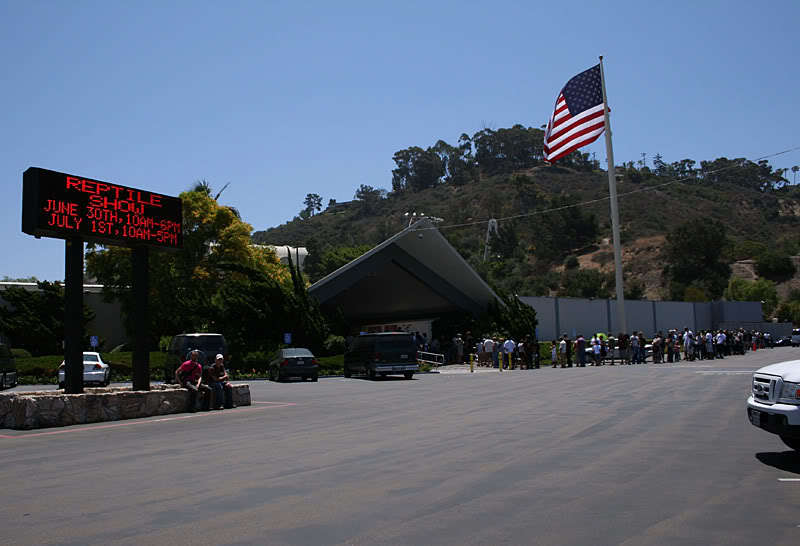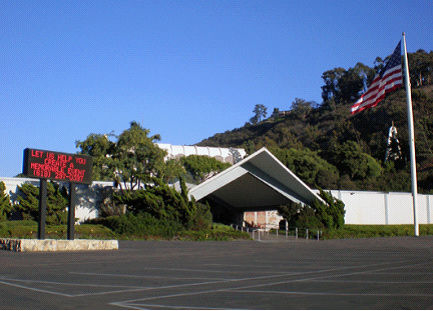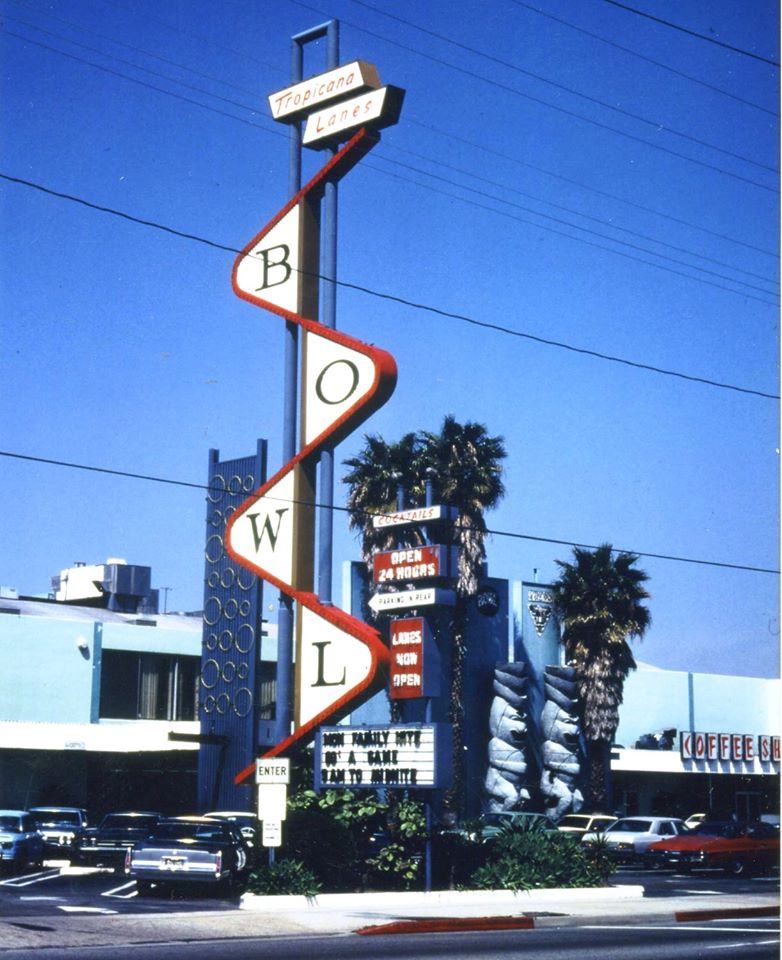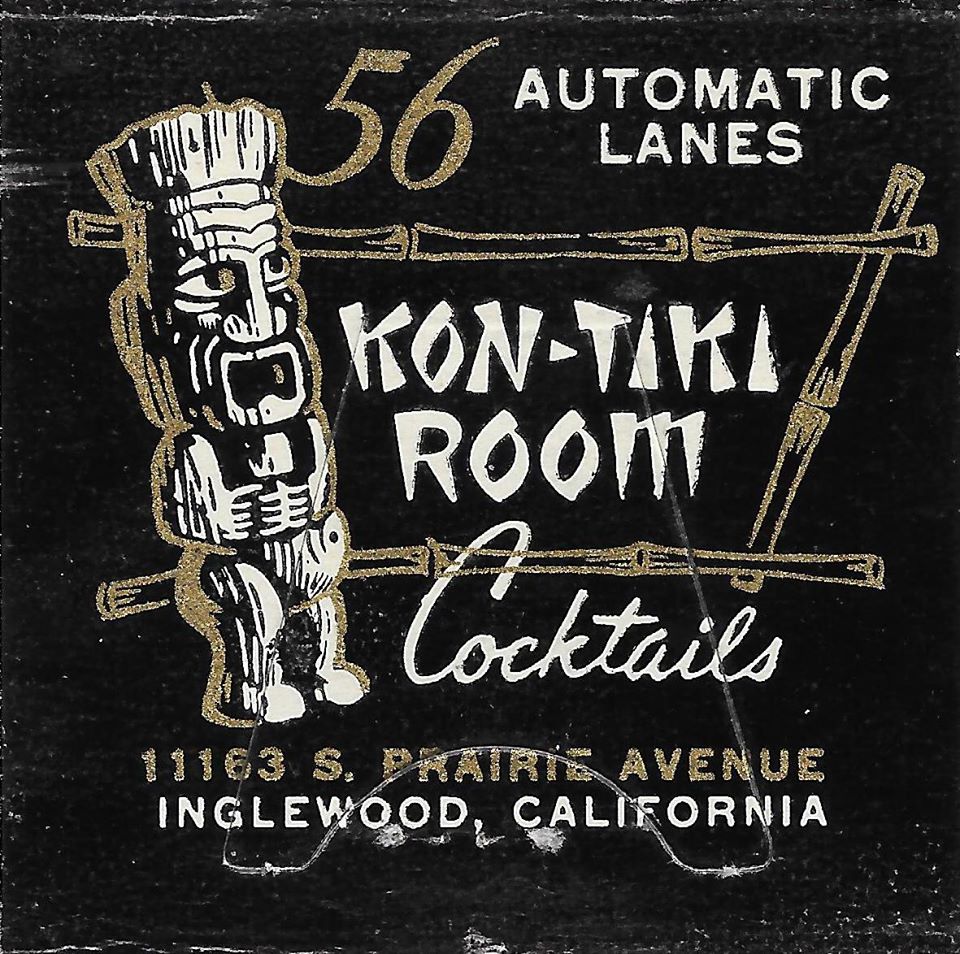Vintage Bowling
Traditional Kustom Hot Rod and Vintage Culture and design :: Architecture: mid century modern, Googie, Art deco
Page 1 sur 1
 Vintage Bowling
Vintage Bowling
Dernière édition par Predicta le Jeu 4 Juin - 8:28, édité 1 fois
_________________
We don't care the People Says , Rock 'n' roll is here to stay - Danny & the Juniors - 1958
 Re: Vintage Bowling
Re: Vintage Bowling
_________________
We don't care the People Says , Rock 'n' roll is here to stay - Danny & the Juniors - 1958
 Re: Vintage Bowling
Re: Vintage Bowling
_________________
We don't care the People Says , Rock 'n' roll is here to stay - Danny & the Juniors - 1958
 Re: Vintage Bowling
Re: Vintage Bowling

Bowl-O-Rama: Friendly Hills Bowl
Do you ever just drive around looking at/for cool signs? I'm pretty sure that every region of the United States still offers an abundance of interesting signage to inspire the natural marketer/advertiser in all of us - if we just keep our eyes open. Many times my eyes are so wide open looking for cool signs that I miss what is happening on the road. As we have discovered, some of the best vintage signs are to be found at bowling alleys and we were certainly not disappointed by the towering, skewered diamonds of Friendly Hills Bowl in Whittier, CA
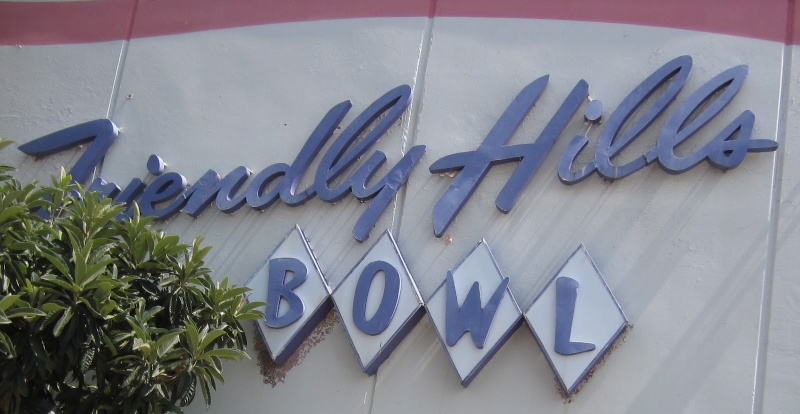
Like many of the bowling alleys around Southern California, Friendly Hills Bowl is a relic of Jet Age optimism and architecture. The roof line looks like a jet taking flight while the structure is grounded by the weight of stacked stones; this juxtaposition of ultra modern angles and stone age materials always lends a dissonance that I find both confusing and thrilling.
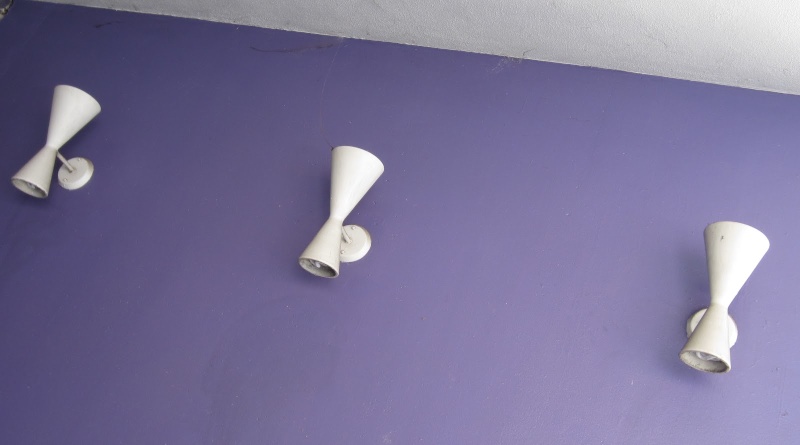
I'm telling you, it's all about mid-Century optimism.
I've always heard that a person whose writing angles upward,
is a natural optimist. Here, the script of the bowling alley's sign
follows the ascending flight path of the roof line, followed
by the diamonds repeated from the larger sign.
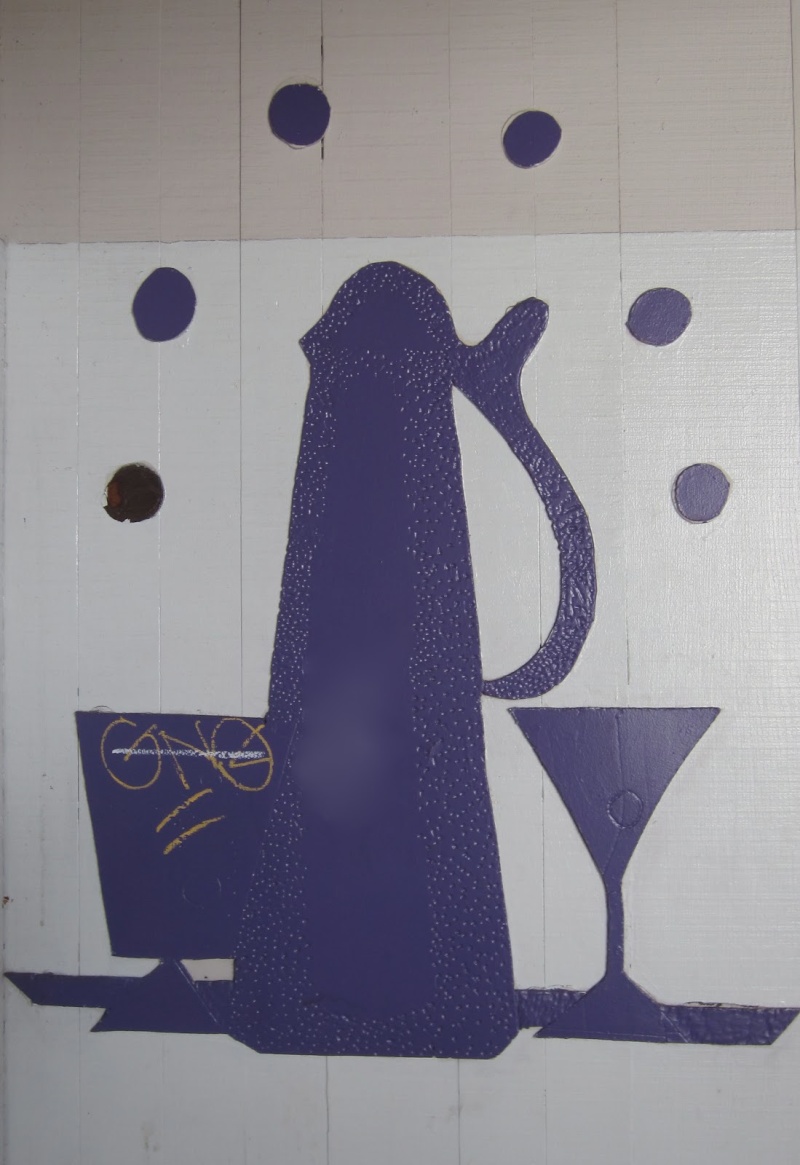
So a cocktail tray, a trifle bowl, a coffee carafe and a martini
glass walk into a bowling alley; they start to juggle and...
I'm not exactly sure what this mural at the entrance to the bowling
alley signifies, but please write me a hilarious joke that
ends with the punchline, "Those aren't bowling balls!".
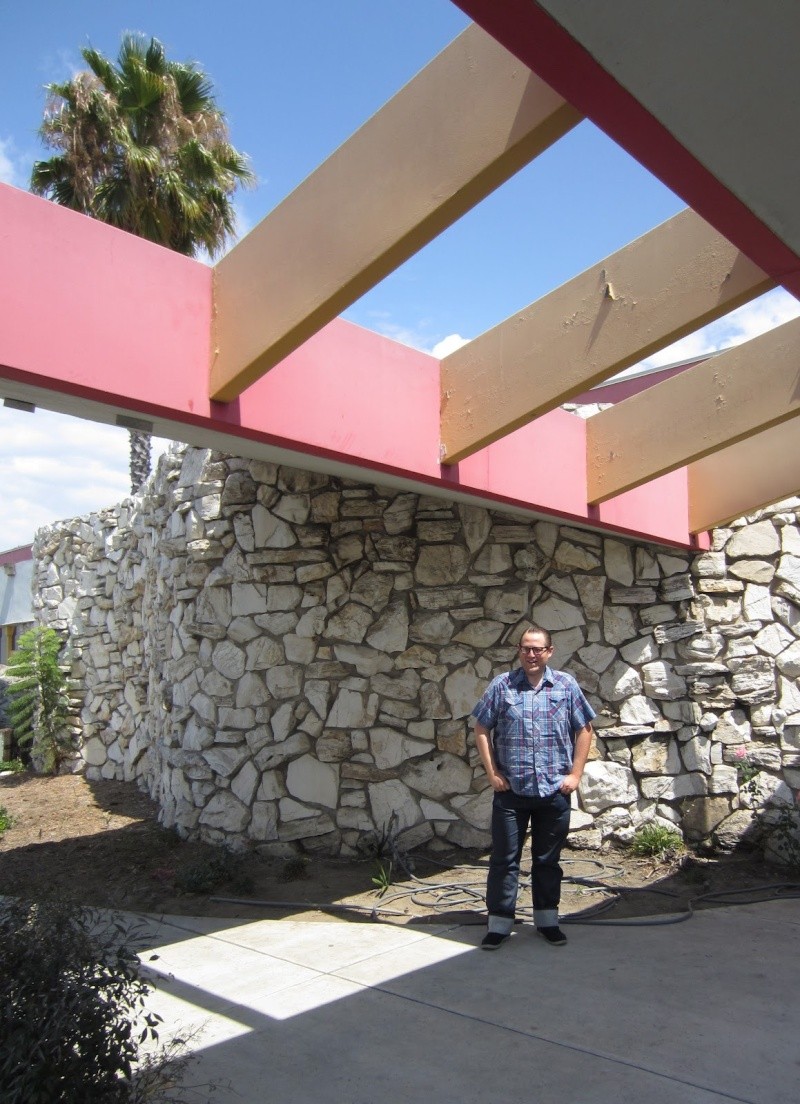
Anywhere we go, I'm always interested in light fixtures,
but the more interesting part to me was the muted violet color
that predominated the color scheme of this and the last bowling
alley we featured (owned by two different companies). Is there
some psychological effect that shades of purple have on bowlers?
Eat more? Drink more? Bowl a few more frames?
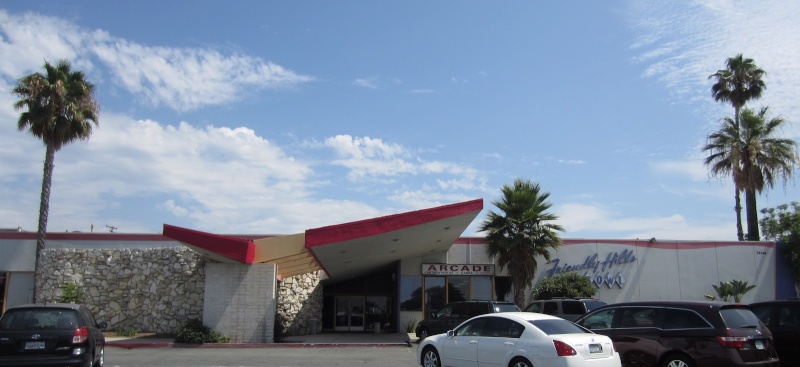
If you're looking for a fun day of bowling or just a slice of pizza and a finger wave, make your way down to Friendly Hills Bowl in Whittier. Look for the diamonds in the sky.
Friendly Hills Bowl
15545 E Whittier Blvd
Whittier, CA
(562)947-3815
http://thewackytacky.blogspot.fr/2012/08/bowl-o-rama-friendly-hills-bowl.html
_________________
We don't care the People Says , Rock 'n' roll is here to stay - Danny & the Juniors - 1958
 Re: Vintage Bowling
Re: Vintage Bowling
_________________
We don't care the People Says , Rock 'n' roll is here to stay - Danny & the Juniors - 1958
 Re: Vintage Bowling
Re: Vintage Bowling
_________________
We don't care the People Says , Rock 'n' roll is here to stay - Danny & the Juniors - 1958
 San Diego: Tower Bowl (demolished)
San Diego: Tower Bowl (demolished)
_________________
We don't care the People Says , Rock 'n' roll is here to stay - Danny & the Juniors - 1958
 Re: Vintage Bowling
Re: Vintage Bowling
_________________
We don't care the People Says , Rock 'n' roll is here to stay - Danny & the Juniors - 1958
 The Covina Bowl - 1956 - Powers, Daly, and DeRosa - CA
The Covina Bowl - 1956 - Powers, Daly, and DeRosa - CA
_________________
We don't care the People Says , Rock 'n' roll is here to stay - Danny & the Juniors - 1958
 Woodley Lewis Sportsman Bowl, Compton, CA
Woodley Lewis Sportsman Bowl, Compton, CA
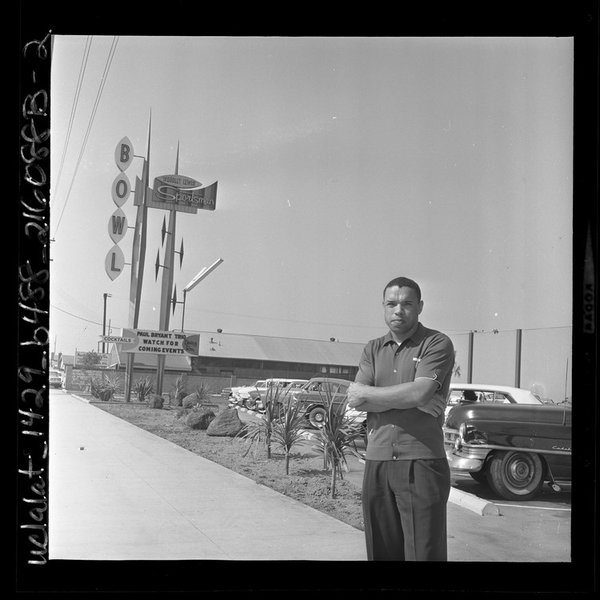
1950 North Central Avenue started its life as the Woodley Lewis Sportsman Bowl. In 1962, Lewis — a Compton native who had been among the first players to break the color barrier in the N.F.L. — took the money he’d earned as a star defensive back for the Los Angeles Rams and invested in a 36-lane bowling alley with an attached restaurant and cocktail lounge. Its opening marked the first wave of black entrepreneurship in Compton. Lewis proudly hung an award plaque sent to him by Chivas Regal. In 1963, his establishment was the brand’s highest-grossing merchant in South Los Angeles.
Next door to the Sportsman Bowl was the Dooto Music Center, an entertainment complex established by Walter Williams, known as Dootsie. Williams amassed a fortune as a record producer — for the Penguins, whose 1954 single “Earth Angel” became a doo-wop standard, and then for a string of local black club comics, including Redd Foxx, George Kirby and Sloppy Daniels, all of whom released their first LPs on the Dooto label. Dootsie’s complex was a combined recording studio, film and television production facility and 1,000-seat auditorium. He envisioned a black-operated entertainment conglomerate: Compton’s own NBC.
The prosperous future that Williams and Lewis intended for southern Central Avenue didn’t survive the 1965 Watts riots. Compton escaped the arson and looting that ravaged neighborhoods to the north, but it couldn’t withstand the psychological fallout. The middle class fled Compton in the late 1960s, decimating business at the bowling alley. Lewis was subsequently arrested for bookmaking in 1970. Shortly thereafter, the inside of his Sportsman Bowl was destroyed in a fire of mysterious origin. Dootsie relocated his investments to Mexico, leaving a young Compton hustler, Lonzo Williams, to operate Dooto’s as a nightclub, while copper thieves gradually stripped the vacant Bowl for every inch of pipe and wire.
The Bowl lay dormant until the late 1970s, when Schweisinger — then a budding commercial real estate agent with an eye for investments — was invited to take his first look inside, armed with a wide-beam flashlight. A series of sunlit cracks spread like white veins across the domed ceiling. When Schweisinger turned his beam onto the floor, he saw a lake of stagnant water covering all 36 lanes, the polished floorboards contorted like the tracks of a roller coaster. From the mud that coated the old cocktail lounge, he excavated Woodley Lewis’s Chivas Regal
plaque.
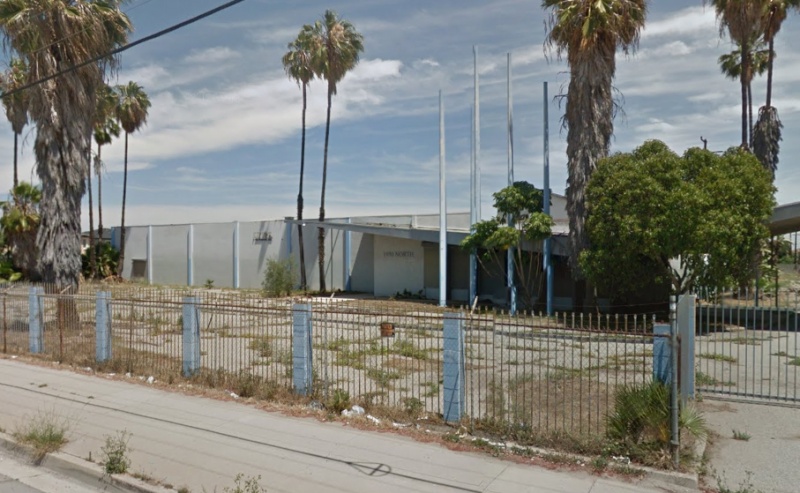
The property offered 40,000 square feet on three acres, and the asking price had dropped to $300,000. Schweisinger calculated that within a few years, he could turn a profit just by renting out the parking lot for truck storage. In the meantime, he fielded plans from prospective operators. The one idea he kept hearing was for a roller rink. Skating was hot, but no one from the neighborhood had the start-up money to make it happen. Conversely, nobody with financial credentials wanted anything to do with Compton.
Though he lived with his family in the Orange County suburb of Westminster, Schweisinger was at ease in the inner city. Growing up in the South Bay, he worked shifts in the grocery store his father owned on Avalon and Imperial, two blocks north of the flash point of the 1965 riots. On the second night of unrest, the Schweisingers were glued to the television. Helicopter coverage showed dozens of looters running from their store with sides of beef, sodas and anything else they could carry out. Schweisinger’s father, Fred, had to turn away from the screen.
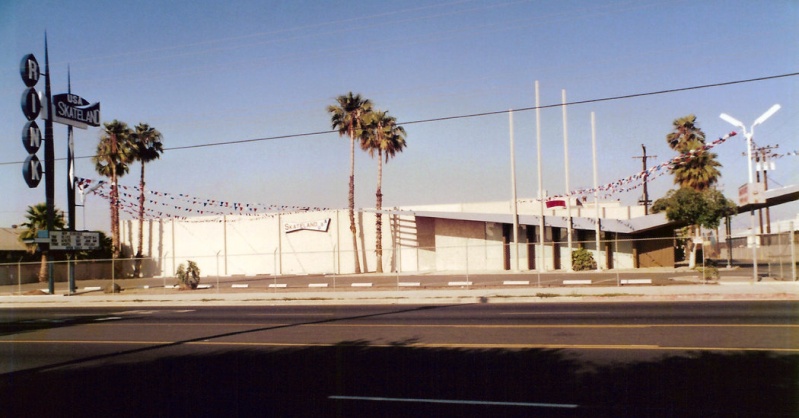
http://www.nytimes.com/2015/08/13/magazine/the-roller-rink-origins-of-nwa.html
_________________
We don't care the People Says , Rock 'n' roll is here to stay - Danny & the Juniors - 1958
 Re: Vintage Bowling
Re: Vintage Bowling
The Skateland U.S.A. roller rink opened to the public on January 6th, 1984. During the 1980’s, gang activity was at its height throughout Los Angeles County. By 1982, the number of gang homicides had doubled. The effects of Reagan’s foreign policies resurfaced in the form of crack cocaine within the poor and ethnic communities of Los Angeles creating factors (drug trade, gang warfare, prostitution, robbery, etc.) that devastated neighborhoods.
Formerly Skateland U.S.A.
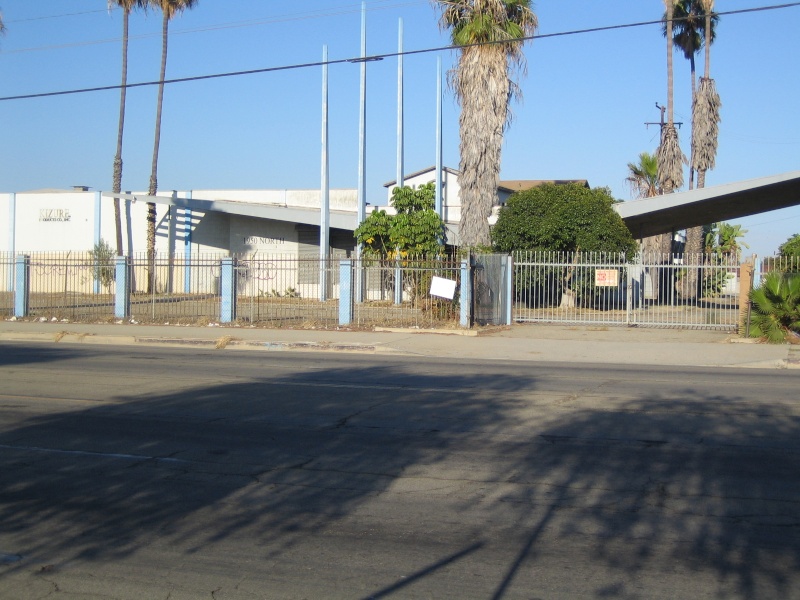
With the opening of Skateland U.S.A. in 1984, it provided a safe haven for the local communities and those plagued by the onslaught of criminal activity. The roller rink became a staple of entertainment for the African-American community of Compton and provided many jobs for the local residents. The roller rink featured concerts, album release parties, radio promotional events, and weekly dances, dance occupancy was 1,700 people but held as many as 2,000 for concerts. Before Skateland U.S.A. opened, the building was formerly a certified AMF 36-lane bowling alley.
Hiphop Outcome:
Among early sites for Hiphop in Los Angeles some of the most important were roller rinks such as Skateland U.S.A. and World on Wheels. The Compton roller rink, equivalent to midtown World on Wheels, was known as the home turf to the Bloods gang organization. For the grand opening of Skateland U.S.A., the roller rink celebrated with a concert featuring local legends the World Class Wreckin’ Cru. Soon thereafter, the Compton location become synonymous for providing a platform for early West and East Coast Hiphop music. Many up-and-coming R&B and Rap artist where featured at the roller rink, local legends The World Class Wreckin’ Cru, East Coast duo Eric B. and Rakim, teen sensations New Edition, West Coast DJ pioneer Mixmaster Spade, Flavor Unit member Latifah (Queen), and the first ever performance of N.W.A. At the time, Dr. Dre maintained DJ duties at Skateland U.S.A. and begun fostering rap talent. One of the crews Dr. Dre took a liken to and began working with was a trio known as C.I.A. (Criminals In Action). The C.I.A. crew, which consisted of Darrell “K-Dee” Johnson, Tony “Sir Jinx” Wheatob, and O’Shea “Ice Cube” Jackson, established a regular gig at Skateland U.S.A. and Eve’s After Dark; through Dr. Dre. Also, Eric “Eazy-E” Wright would hang out with DJ Yella and Dr. Dre inside the DJ booth and talk about forming a South Central supergroup. Shortly thereafter, during Skateland U.S.A.’s after parties Eazy-E, Dr. Dre, and DJ Yella could be seen composing music in the snack bar.
Formerly Skateland U.S.A.

With the opening of Skateland U.S.A. in 1984, it provided a safe haven for the local communities and those plagued by the onslaught of criminal activity. The roller rink became a staple of entertainment for the African-American community of Compton and provided many jobs for the local residents. The roller rink featured concerts, album release parties, radio promotional events, and weekly dances, dance occupancy was 1,700 people but held as many as 2,000 for concerts. Before Skateland U.S.A. opened, the building was formerly a certified AMF 36-lane bowling alley.
Hiphop Outcome:
Among early sites for Hiphop in Los Angeles some of the most important were roller rinks such as Skateland U.S.A. and World on Wheels. The Compton roller rink, equivalent to midtown World on Wheels, was known as the home turf to the Bloods gang organization. For the grand opening of Skateland U.S.A., the roller rink celebrated with a concert featuring local legends the World Class Wreckin’ Cru. Soon thereafter, the Compton location become synonymous for providing a platform for early West and East Coast Hiphop music. Many up-and-coming R&B and Rap artist where featured at the roller rink, local legends The World Class Wreckin’ Cru, East Coast duo Eric B. and Rakim, teen sensations New Edition, West Coast DJ pioneer Mixmaster Spade, Flavor Unit member Latifah (Queen), and the first ever performance of N.W.A. At the time, Dr. Dre maintained DJ duties at Skateland U.S.A. and begun fostering rap talent. One of the crews Dr. Dre took a liken to and began working with was a trio known as C.I.A. (Criminals In Action). The C.I.A. crew, which consisted of Darrell “K-Dee” Johnson, Tony “Sir Jinx” Wheatob, and O’Shea “Ice Cube” Jackson, established a regular gig at Skateland U.S.A. and Eve’s After Dark; through Dr. Dre. Also, Eric “Eazy-E” Wright would hang out with DJ Yella and Dr. Dre inside the DJ booth and talk about forming a South Central supergroup. Shortly thereafter, during Skateland U.S.A.’s after parties Eazy-E, Dr. Dre, and DJ Yella could be seen composing music in the snack bar.
_________________
We don't care the People Says , Rock 'n' roll is here to stay - Danny & the Juniors - 1958
 300 Bowl aka AMF Bowling Lanes on Bethany Home Road Phoenix
300 Bowl aka AMF Bowling Lanes on Bethany Home Road Phoenix
_________________
We don't care the People Says , Rock 'n' roll is here to stay - Danny & the Juniors - 1958
 Re: Vintage Bowling
Re: Vintage Bowling
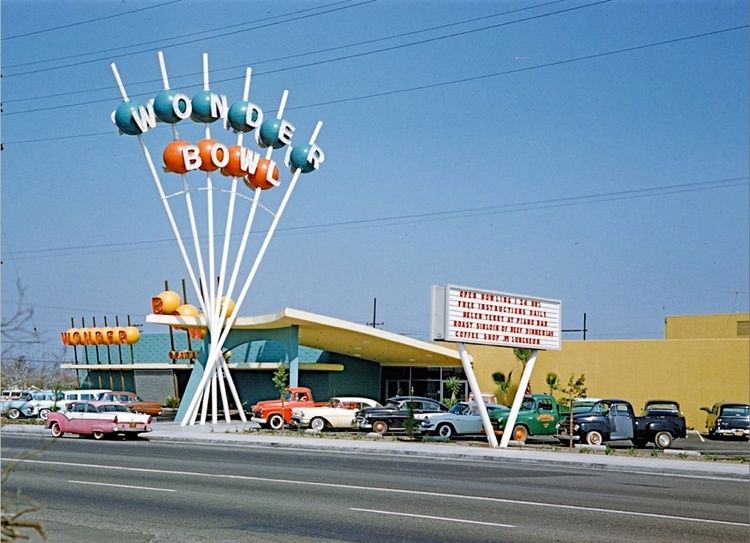
Wonder Bowl, Anaheim, California,1958, Kodachrome image from the Charles Phoenix "Slibrary" Collection.

The Wonder Bowl on Katella Avenue also contained The Gilded Cage, a bar, which threw fantastic New Year's Eve parties in the late 1950s-1960s.
The bowling alley was bought by Disneyland in 1985, who turned the structure into a storage facility for the park's decorations and entertainment props.
Disney demolished Wonder Bowl to create (can you guess?) another parking lot.
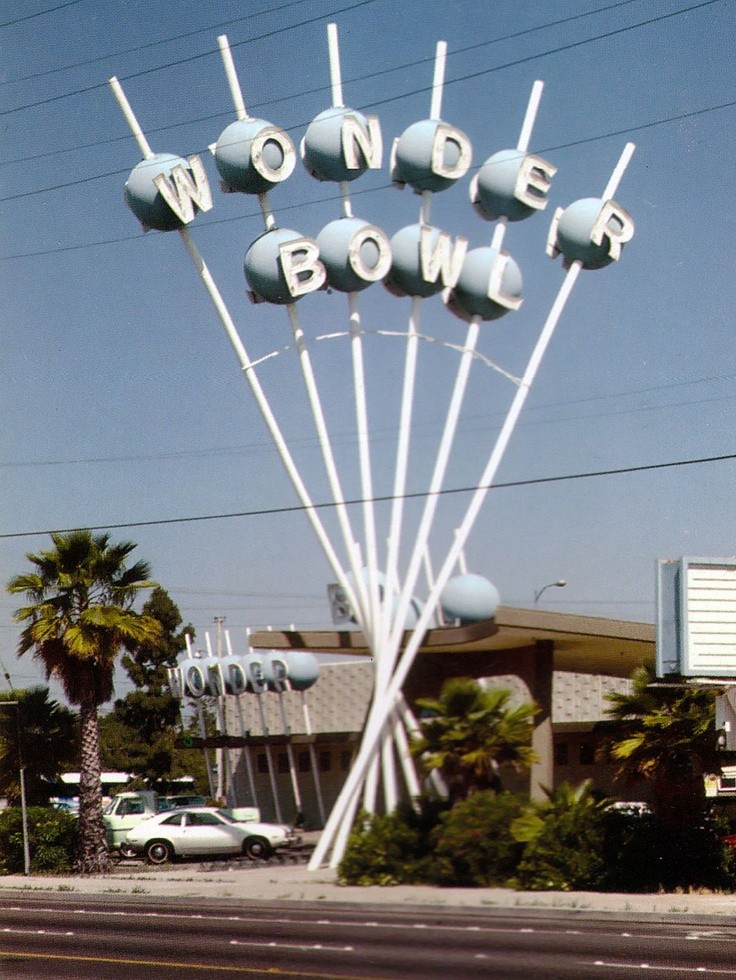
_________________
We don't care the People Says , Rock 'n' roll is here to stay - Danny & the Juniors - 1958
 Bowlero. San Diego, CA
Bowlero. San Diego, CA
_________________
We don't care the People Says , Rock 'n' roll is here to stay - Danny & the Juniors - 1958
 Re: Vintage Bowling
Re: Vintage Bowling
_________________
We don't care the People Says , Rock 'n' roll is here to stay - Danny & the Juniors - 1958
 Re: Vintage Bowling
Re: Vintage Bowling
_________________
We don't care the People Says , Rock 'n' roll is here to stay - Danny & the Juniors - 1958
 Lanes Bowling Alley, San Diego, California, 1958
Lanes Bowling Alley, San Diego, California, 1958
_________________
We don't care the People Says , Rock 'n' roll is here to stay - Danny & the Juniors - 1958
 The Tropicana Lanes in Inglewood
The Tropicana Lanes in Inglewood
_________________
We don't care the People Says , Rock 'n' roll is here to stay - Danny & the Juniors - 1958
 Sujets similaires
Sujets similaires» Architectures vintages de Magasins, commerces et super marchés - vintage shop & super market
» Vintage pics - Caravaning et retro camping - Vintage trailer & van
» Photo Vintage -vintage pics - Chopper & Bobber
» Canapés vintage - Sofa banquette vintage (50's & 60's)
» Holiday lanes bowling (salt lake City)
» Vintage pics - Caravaning et retro camping - Vintage trailer & van
» Photo Vintage -vintage pics - Chopper & Bobber
» Canapés vintage - Sofa banquette vintage (50's & 60's)
» Holiday lanes bowling (salt lake City)
Traditional Kustom Hot Rod and Vintage Culture and design :: Architecture: mid century modern, Googie, Art deco
Page 1 sur 1
Permission de ce forum:
Vous ne pouvez pas répondre aux sujets dans ce forum
 Connexion
Connexion



